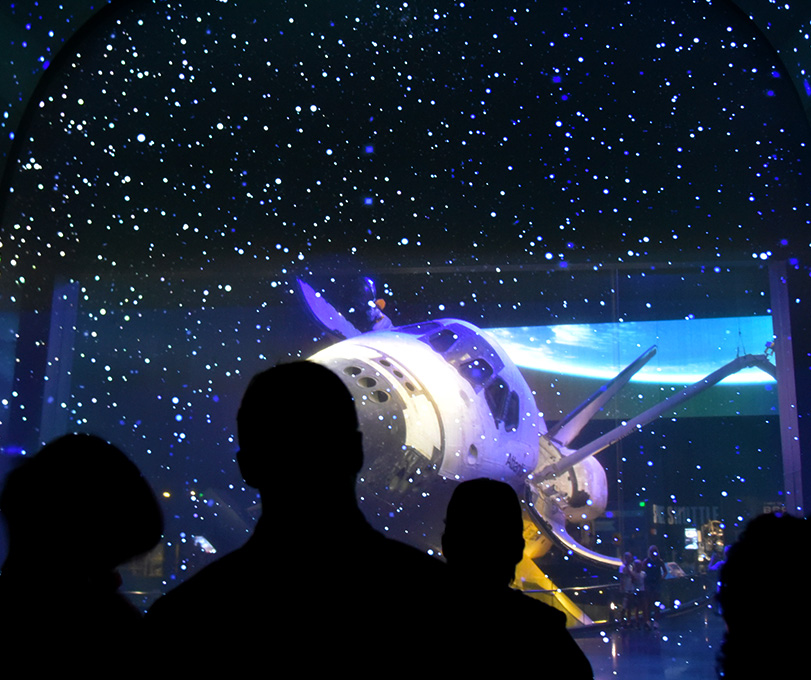OVERVIEW
Space Shuttle Atlantis™ is a major attraction in its own right. But, when Atlantis moved to its final destination at the Kennedy Space Center Visitor Complex, the organizers aimed to tell a bigger story. They wanted to put Atlantis and the Shuttle Program in the context of America’s achievements in space exploration — and enable visitors to experience the drama and wonder of space travel. And, because there are so many other great attractions at the Visitor Center, this had to be special. Within the 90,000-square foot facility, the organizers saw opportunities to use technology to recreate the space environment and provide important educational information. The standard of the experience would have to match that of a planetarium in terms of visual imagery. And, there were great opportunities to involve visitors in astronauts’ activities through interaction and simulation.
The result is an interactive experience that gives visitors the opportunity to get a first hand feel for life in space on board the International Space Station — an immersive experience in sleeping, eating, exercising and functioning like an astronaut. There’s an Astronaut Training Experience where visitors train to live and work on distant planets through exciting and immersive simulation technology. Visitors can explore the Microgravity Theater and carry out simulated science experiments in space.
There are amazing views of the earth from space, images from the world-famous Hubble telescope and recreations of living conditions inside Atlantis. Interactive touch screens allow visitors to explore all 135 shuttle missions. There’s even a simulation of a space walk, a shuttle re-entry slide and a chance to operate robotic arms and land a docking station – just like an astronaut. It took great technology to put Atlantis into space and now technology is recreating its amazing achievements. This experience boldly goes where no exhibition had gone before.










.jpg?width=1500&height=995&name=ELC501_N17_medium%20(1).jpg)


